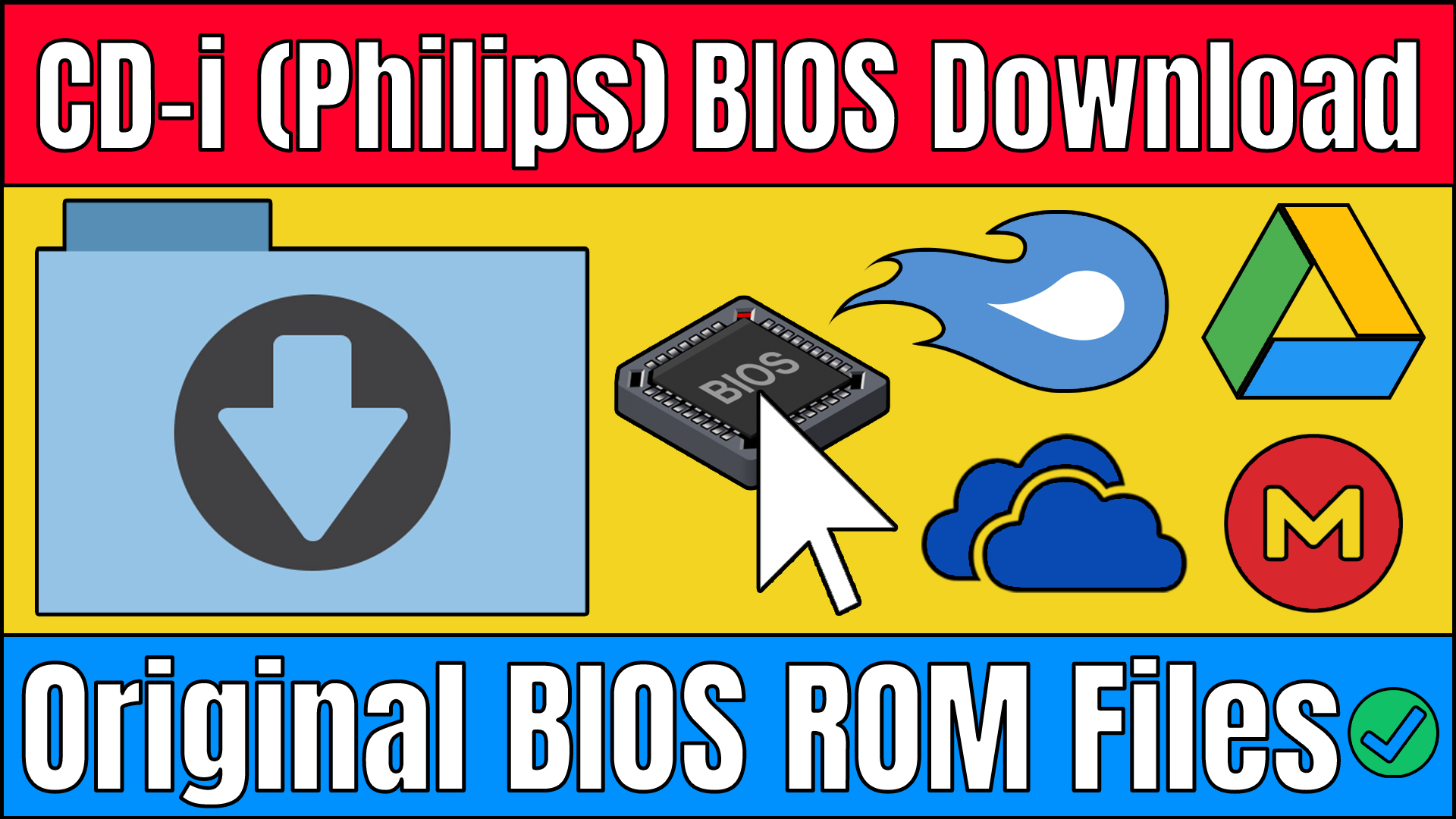Download Free CD-i BIOS For CD-i Emulators
| BIOS Name: | CD-i (Philips) BIOS |
| BIOS ROM Files: | CD-I 200.rom CD-I 205.rom CD-I 220.rom CD-I 490.rom CD-I 910.rom |
| File Size: | 1.1 MB |
| Console/System: | CD-i (Philips) and CD-i Emulators |
| Updated: | Today |
| Rating: | 10/10 |
| Downloads: | 100K+ |
What is a Philips CD-i ?
The multimedia CD player known as the Philips CD-i (Compact Disc Interactive) was developed by Philips in the late 1980s and early 1990s. It was made to play interactive CDs, a brand-new type of disc that could be used to play games, watch movies, and display other interactive content. It was designed to play interactive CDs.
The CD-i had a variety of ports and connectors for connecting to a TV, video cassette recorder, audio system, and other devices. It was powered by a Motorola 68000 processor. Additionally, it had a touch-sensitive pad and a built-in keyboard for interaction and navigation.
In addition, the CD-i’s proprietary CD-i format was designed to be compatible with a wide range of software and content formats. These formats include CD-ROMs, Photo CDs, and Video CDs. It could also play standard audio CDs.
The CD-i had a limited application and game library and was not a commercial success. Customers did not find the CD-i console to be appealing due to the high price of the hardware compared to other consoles on the market, as well as the poor quality of some of the games, video playback, and features that were not interactive.
A few interactive features, like cooking recipes, Encyclopedias, and educational games. However, due to its unusual hardware and software collection, the CD-i has developed a cult following among retro gamers and collectors.
What is CD-i Emulator ?
A CD-i emulator is a program that enables a computer to emulate the Philips CD-i player’s functionality, allowing users to play interactive CD-i games and other content on their computer. CD-i emulators enable the computer to run the same code that would run on the original hardware by imitating the behaviour of the CD-i’s hardware and software.
- These are some well-liked CD-i emulators:
- CDIEMU: It plays audio and video as well as a wide range of CD-i games and applications, making it one of the earliest and most widely used CD-i emulators.
- CD-i Player: Another well-liked CD-i emulator that works well on modern computers and can be used on multiple platforms and supports a wide variety of titles.
- CD-i Ready: It is an open-source emulator, which means it can be modified, and it is also a lightweight emulator that runs on Windows and supports a wide variety of CD-i titles.
- It is important to note that not all CD-i games and applications are fully compatible with all CD-i emulators due to the complicated nature of the CD-i hardware and software.
- Graphical glitches, compatibility issues, and other issues may exist in some. Even if the game or application runs correctly, the emulator’s performance may be sluggish due, for example, to the emulator’s power and graphics card.
- Additionally, the CD-i’s hardware protection mechanism may be problematic for some emulators, making it challenging to run certain applications or games.
- As with any emulated software, it’s critical to use a CD-i emulator only to run games or applications that you own or legally obtained elsewhere.
What is CD-i BIOS ?
The initialization of the device’s hardware, including the CPU, memory, and peripheral devices, is the responsibility of the CD-i BIOS. It also has a number of low-level routines and functions that the operating system and other software use to communicate with the hardware. Memory management, interrupt management, and input/output (I/O) handling are all handled by these routines.
The code for the CD-i’s built-in operating system, which is responsible for managing the system’s resources and running applications and games, is included in the CD-i BIOS in addition to the standard BIOS functions.
It is important to note that the CD-i’s BIOS is protected by copyright law because it is proprietary software. It is against the law to distribute the BIOS without Philips’ or its successors’ permission.
Reverse engineering the original BIOS in order to comprehend its functionality and imitate it is frequently used to create “BIOS replacements,” which enable CD-i emulators to run CD-i software. Some CD-i emulators include an original BIOS. Depending on the nation, this may fall into a legal gray area, so proceed with caution.

Download CD-i (Philips) BIOS
[File Type: WinRAR ZIP archive (.zip)] [Size: 1.1 MB]
Note: Download & Extract Using WinRAR To Get CD-i BIOS ROM Files.







Download and Extract CD-i (Philips) BIOS.zip using Any Archive File Extractor Tool/Software to Get CD-i BIOS ROM Files:
- CD-i BIOS ROM Files List:
- CD-I 200.rom
- CD-I 205.rom
- CD-I 220.rom
- CD-I 490.rom
- CD-I 910.rom
The content provided is for educational and informational purposes only.
Philips (or its successor companies) own the copyright to the CD-i BIOS because it is software that is protected by copyright. As a result, the BIOS cannot be distributed without the permission of the copyright owner.
However, this rule may have some exceptions. For instance, if the use is limited and not for commercial gain, it may be permitted to use copyrighted work for research, analysis, or reverse engineering in some nations. Using a BIOS to run an emulator is also considered a “fair use” under copyright law, according to some courts. However, this is highly contingent on the particular case and jurisdiction.
It is essential to keep in mind that the CD-i BIOS’s legal status can be complicated and varies based on the particular circumstance and even your home country. As a result, if you have any legal questions or concerns about how to use the CD-i BIOS, you should talk to a lawyer.
To play CD-i games and applications, it is best to use an emulator that has been legally obtained or produced rather than the original CD-i hardware.
